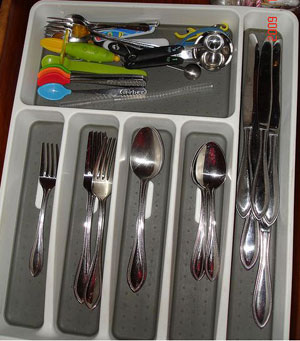 Spoons and Forks Spoons and Forks
The 26 point Furnace Inspection explained. Take a walk into your kitchen and open up your kitchen silverware door. Count the types of knives (butter, steak, etc.), spoons (tea, table, etc.), forks (salad, dinner, etc.). In the picture to the left this silverware door has at least 12 different types of utensils. Inspect them and bingo, you’ve have just completed a 12 point silverware drawer inspection. Most furnace tune ups are about as effective as this.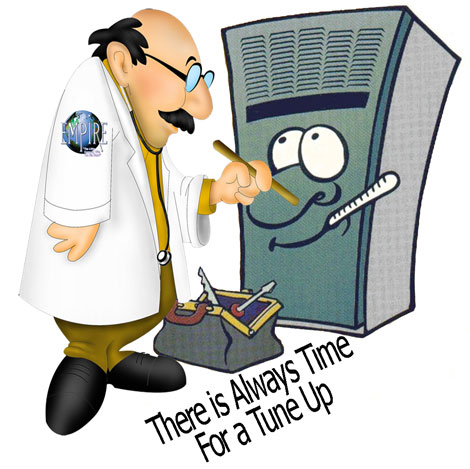
Heat Exchanger – Firebox
The one item that can really cause problems in a furnace is a crack or rupture in the firebox or heat exchanger. The most common problem caused by these ruptures are not carbon monoxide positioning. It is fire. Usually when a crack or rupture in the heat exchanger occurs it is small and doesn’t seem to do any harm, but we cannot tell when the cracks enlarges and becomes dangerous. Once the crack opens up the pressure of the air from the blower can blow the flames right out of the firebox and onto the gas valve serving the furnace. A run away fire can occur.
A thorough checkup of the firebox involves removing the blower assembly and spraying down the heat exchanger with a fluorescing liquid. After this has been performed a fluorescent hydro-scan of the heat exchanger can occur by using a high intensity ultra violet light and shinning it into the area where the burners are. If the heat exchanger is defective we will see the liquid fluorescing through the heat exchanger and then can pinpoint the problem. No guessing, no magic and no mistakes.
Blower Motor – Blower Wheel
After removing the blower assembly we can thoroughly check out the conditioning of the motor and blower wheel, If they are full of debris airflow will be compromised. They can then be cleaned.
Gas Connections and the Gas Valve
Every gas connection needs to be examined with a combustible gas leak detector. Normally when we open the furnace compartment and a gas leak is present we can smell it. The combustible gas leak detector allows us to pinpoint the problem and resolve it. Most leaks are little more than tightening a connection a turn or so.
Air Fuel Mixture at the Burners
Air fuel mixtures can change over the course of the year through vibrations and blockage. The blockage is normal dirt, debris and spider webs. These should be adjusted once each year to ensure that there is a primarily blue flame. The entire flame doesn’t need to be blue, just most of it. A poor air fuel mixture can destroy a furnace.
Evaporator Coil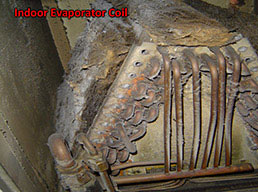
After the blower assembly is removed on the furnace we can shine a flashlight up through the middle of the furnace and see the condition of the evaporator coil. If the evaporator is plugged or shows signs of leakage a further investigation can occur by removing the panels that hide the coil from view. If it is dirty, it can then be cleaned to allow for the proper amount of airflow through the furnace. (The right picture is a very dirty evaporator coil)
Air Filter – Air Cleaner
Dirty filters cause problems for furnaces. The wrong style of filter, the wrong size or ill fitting filters cause problems for furnaces. The right filter makes a difference.
Circuit Board – Electrical Contacts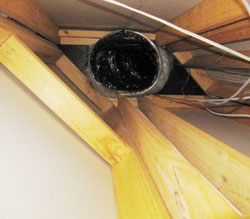
We are mainly checking for loose connections and chattering relays. Both of these can cause intermittent problems with the furnace control circuitry and cause the heating to stop working.
Air Ducting – Air Flow Through the Furnace
A HeatMaxx survey should be performed. We will check the airflow traveling through the furnace and the airflow entering the home from the registers. Lack of airflow or airflow leaving your system through improperly connected ducting can cause discomfort, drafts, dirty air and high utility bills. We will let you know how well your entire system is functioning, not just a quick peak at your furnace. (The picture to the right is an open air duct in an attic. This was the reason why the furnace wasn't heating the home very well.)
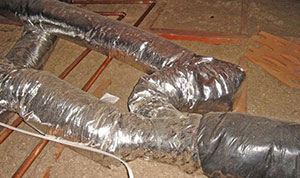 Temperature Rise Across the Firebox Temperature Rise Across the Firebox
Most furnaces are designed to have a temperature rise of 40 to 60 degrees across the heat exchanger. A sure sign of a significant future problem is a temperature rise of more than 60 degrees. This will cause the heat exchanger to expand and contract too much. Early detection of this problem can add many years to the life of your furnace. (The picture to the left is a sample of some very poorly installed ducting. This installation resulted in a temperature rise of 71 degrees across the heat exchanger. Turbulence in the ducting reduced airflow dramatically.)
Thermostat
A thermostat that is properly set can save you about 10% in your utility bills, not a huge deal, but why spend more than you need to if you are not receiving anymore comfort? |
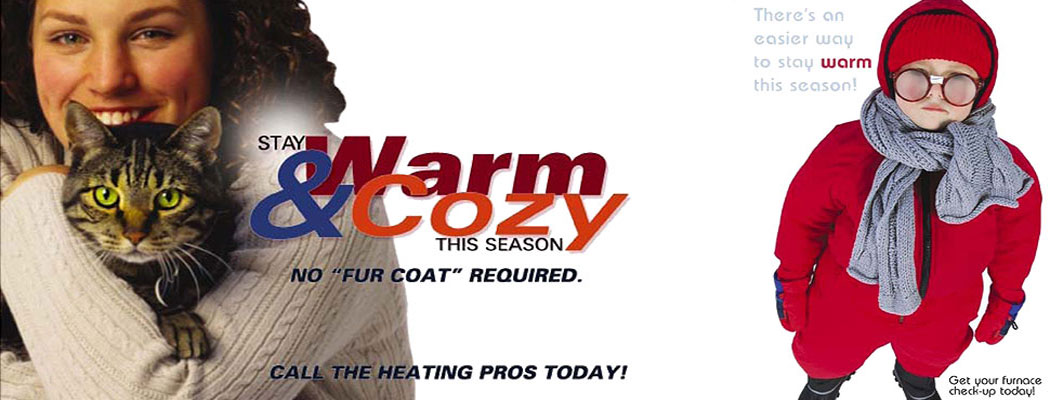
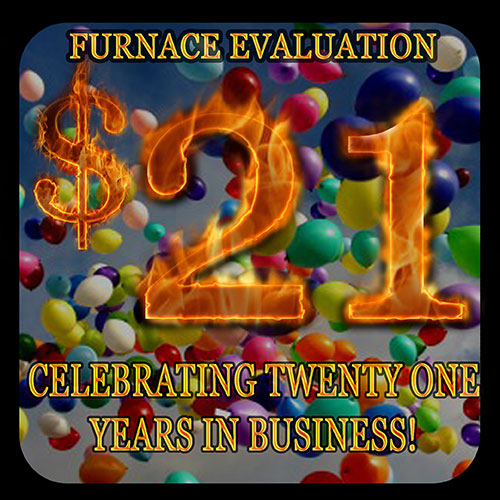


 Spoons and Forks
Spoons and Forks



